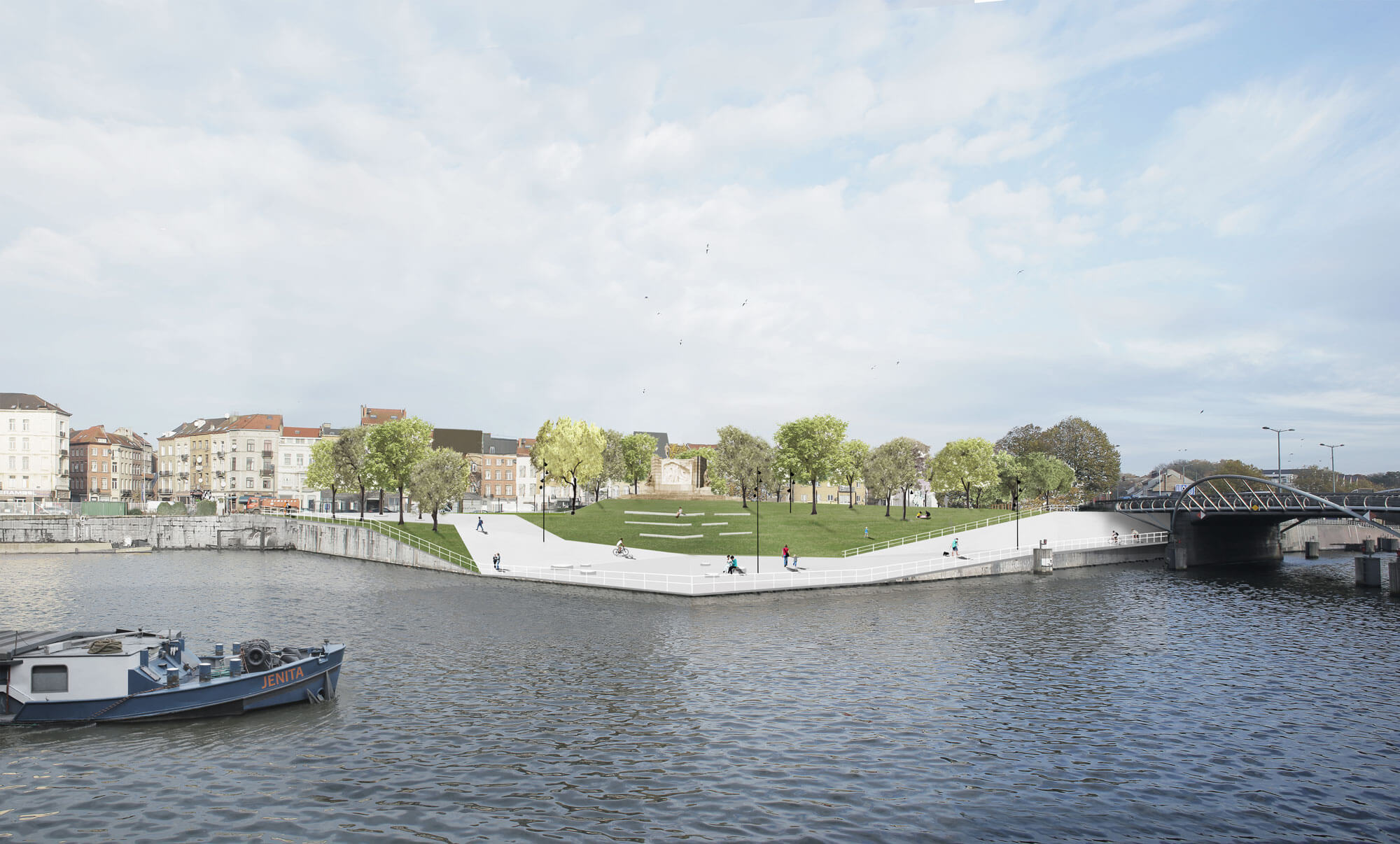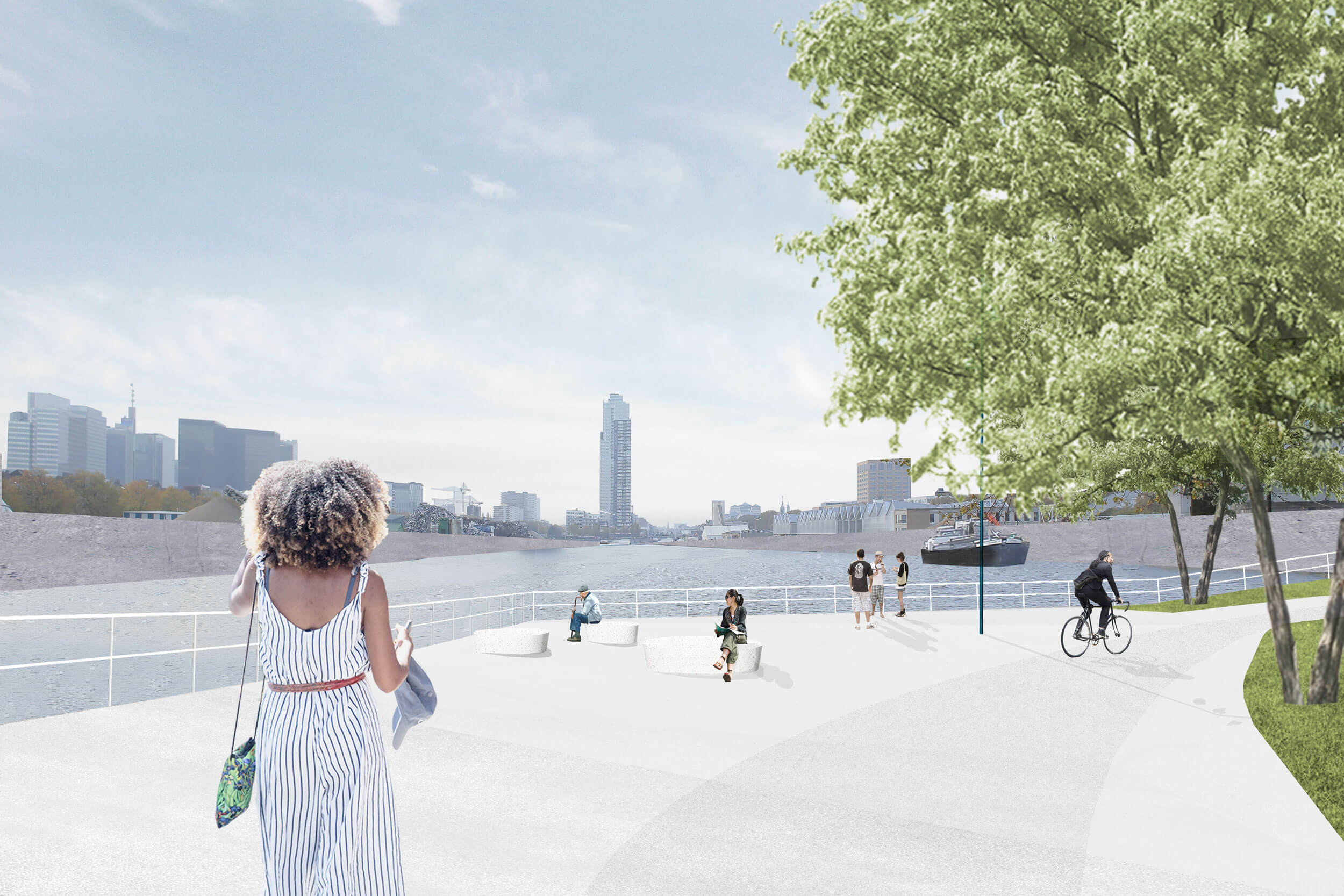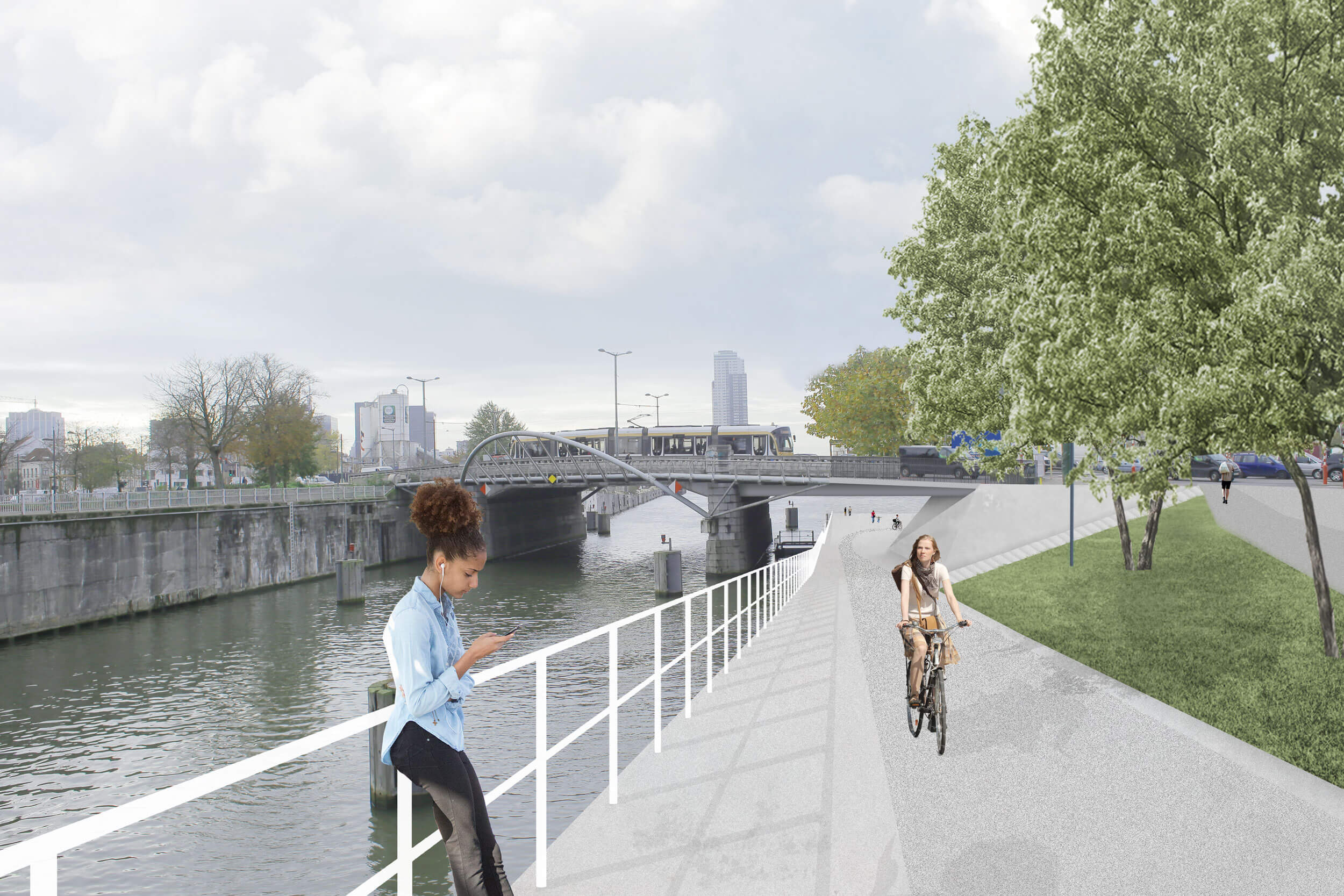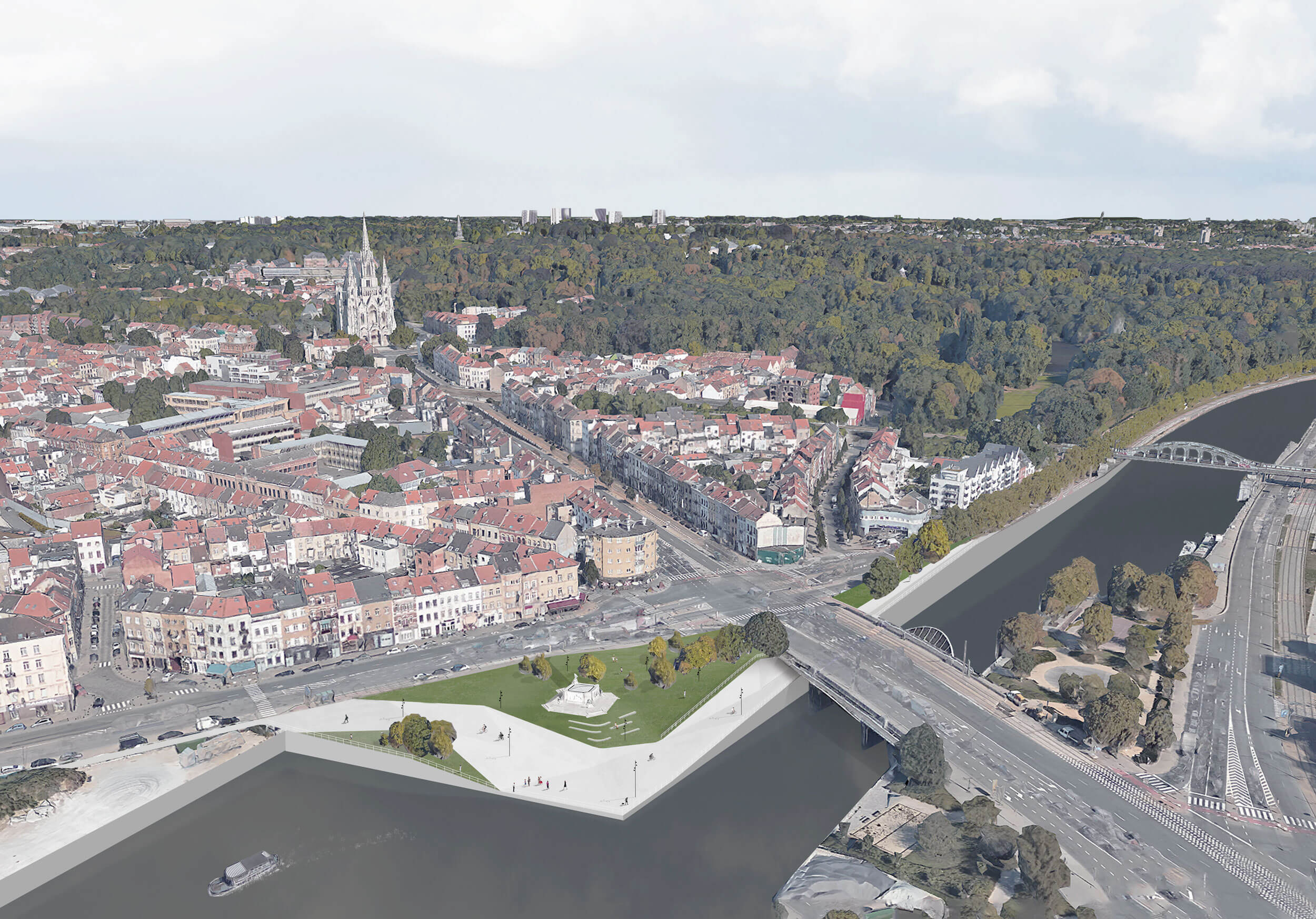Gijs Van Vaerenbergh and Util design 3 new connections for pedestrians and cyclists along the canal
Gijs Van Vaerenbergh and Util have been awarded the final assignment to design pedestrian- and cyclist connections under the Van Praet, Jules de Trooz and Sainctelette bridges. They have been selected because of the emphasis on the integration of the walking and cycling connections within the surrounding public space.
Gijs Van Vaerenbergh and Util have been awarded the final assignment to design pedestrian- and cyclist connections under the Van Praet, Jules de Trooz and Sainctelette bridges. They have been selected because of the emphasis on the integration of the walking and cycling connections within the surrounding public space.
In 2017, at request of Pascal Smet, then Minister of Mobility, Brussels Mobility launched the assignment to create a connection for pedestrians and cyclists under the Van Praet, Jules de Trooz and Sainctelette bridges along the canal. This assignment was supervised by the chief architect of the Brussels-Capital Region. In the evaluation of the applications, the jury considered both mobility and urban planning criteria. In June, the contract was definitively assigned to the design agency Gijs Van Vaerenbergh, based in Leuven. The entire (legal) procedure has now been completed. The design team also consists of Util Structural Engineering, LandInZicht, Buro Move and ARA and won the selection because it strongly emphasises the integration of the walking and cycling connections within the surrounding public space.
The cycle route along the canal is one of the busiest in Brussels. Thanks to the new connections under the Van Praet, Jules de Trooz and Sainctelette bridges, thousands of cyclists will be able to travel faster and safer through the city. This canal route is not only part of the Regional Cycle Network and the Cycle Regional Express Network but also of the European REVER-cycle network. It also creates an important connection with the city centre and not only crosses other cycle routes in thirteen different places but also the Green Walk, both in the northern and the southern part.
The winning design team chose to gradually lower and widen the canal quays at the level of the three bridges. This creates a slow descent of the public spaces along the water and ensures a smooth passage under the existing bridges. Sloping surfaces ensure that the connections are naturally integrated in the surrounding public space.
The selected design respects the principles of the visual quality plan of the entire canal area. The materials and street furniture to be used will contribute to a good integration of the connections in the neighbourhood and to a visual coherence along the canal. Not only aesthetics and the comfort of pedestrians and cyclists are included in the design, but also the feeling of safety. That is achieved, among other things, by the open character and appropriate lighting.
The connections under the bridges will also be neatly integrated in other ongoing projects in the surroundings, such as the redevelopment of the Sainctelette square.
Together, the three projects are expected to cost around 5 million euro (excl. VAT), of which about one third will be financed by the European Regional Development Fund.
The agency will now concretise the design for the three connections in order to submit a building permit application as soon as possible.
Gijs Van Vaerenbergh designs 3 new connections along the canal. A great example of how we plan the Brussels of tomorrow. By creating a lot of space for pedestrians, cyclists and quality public space.#BrusselsForPeople pic.twitter.com/U5C5MYmqRq
— Pascal Smet (@SmetPascal) January 14, 2020





